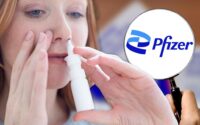Teens abusing Adderall bought online amid national shortage
Up to 25% of middle and high school students are abusing prescription stimulants such as Adderall amid a national shortage of the ADHD drug, according to a sobering new study published Tuesday in Journal of the American Medical Association.
University of Michigan researchers analyzed survey answers from schools across the country to assess the use of prescription stimulants among students who have ADHD and those who use the drug non-medically.
They discovered that as many as one in four student bodies were abusing medication typically prescribed to treat attention-deficit/hyperactivity disorder, which affects 6 million children aged 3 to 17 in the US.
“The drug supply has rapidly changed, and what looks like medications — bought online or shared among friends or family members — can contain fentanyl or other potent illicit substances that can result in overdoses,” Dr. Nora Volkow said in a statement to the National Institutes of Health, which partnered with the university for the research.
“It’s important to raise awareness of these new risks for teens,” continued Volkow, who is the director of the National Institute on Drug Abuse.
Adderall and other forms of stimulant therapy are an “evidence-based treatment for ADHD,” according to the new study, “but it can also be harmful if used without prescription or guidance from clinicians.” Prolonged misuse can lead to cardiovascular conditions, depressed mood, overdoses, psychosis, anxiety, seizures and stimulant use disorder.

U of M researchers used data from 3,284 schools collected between 2005 and 2020 for the national Monitoring the Future study of “legal and illicit drug use” among American adolescents in 8th, 10th and 12th grades, also funded by NIDA.
The sample size is big enough to be representative of secondary schools nationwide, study authors reported.
After assessing the data from 231,141 students, researchers found that past-year non-medical use of prescription stimulants ranged from 0% to more than 25%, depending on the school.
Schools with higher rates of stimulant abuse typically had more students who received stimulant therapy to treat ADHD, were located in suburban neighborhoods, had a higher proportion of white students, were attended by students whose parents received higher education and where students engaged in “medium-level” binge drinking, defined as 10% to 19% of the student body.
Students who went to school with higher rates of stimulant therapy were also at an increased risk of stimulant abuse by 36% compared to students who attended schools with lower rates of stimulant therapy among the student body.

“The key takeaway here is not that we need to lessen prescribing of stimulants for students who need them, but that we need better ways to store, monitor and screen for stimulant access and use among youth to prevent misuse,” said Dr. Sean McCabe, the study’s author, in an NIH statement.
The NIH also cited past studies that found that over half of adolescents who abuse prescription stimulants often get the drugs from friends or family members.
McCabe highlighted the “critical” need for education on prescription stimulant medication in order to curb the drugs’ misuse, which can cause serious adverse health effects.
In March, the Centers for Disease Control and Prevention issued an alert that stimulant prescriptions rose during the pandemic by more than 10%, especially among women — some of whom have taken to TikTok to self-diagnose.
The report arrived amid a national Adderall shortage, which has made it near impossible for people with ADHD to get the medication they need, according to the Food and Drug Administration.

Brooklynite Natalie Nevares, mom to a 17-year-old son with the disorder, told The Post this month that she was forced to call 50 pharmacies just to fill her child’s life-saving prescription. Now, the family must ration the Adderall — a Schedule II drug classified as a controlled substance – just so he can get through the school day.
“It’s really, really kind of scary,” she said.
Stimulant drugs such as Adderall, Vyvanse, Ritalin and more are used to treat ADHD symptoms because the medication increases the amount of neurotransmitters, or chemicals, in the brain. Those chemicals, typically dopamine and norepinephrine, help people with ADHD focus.


